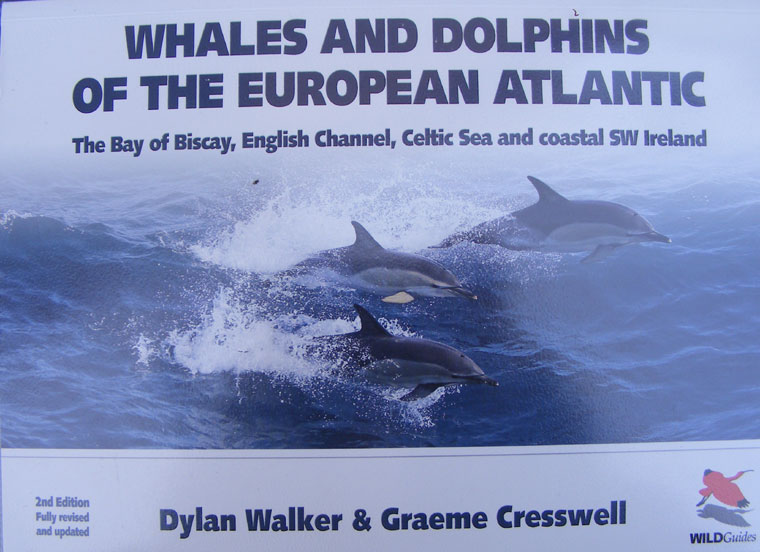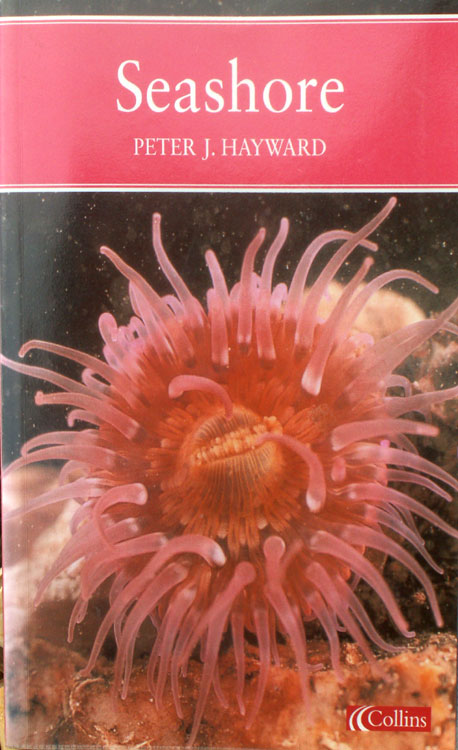|
PUBLICATIONS
&
WEB PAGES
BOOKS
PUBLICATIONS
----------------------------------------------------------------------------------------------------------------------------------
NEW
RECOMMENDED GUIDE

Series:
Collins Complete Guide
Collins
Complete Guide to British Coastal Wildlife
Paul
Sterry and Andrew Cleave
384
pages, approximately 1600 colour photos
Harper
Collins
List
price is £17.99 Offers available
This
comprehensive guide contains all the information for the the beginner seashore
enthusiast and plenty for the experienced rockpooler,
snorkeller and seashore visitor to make it an essential and first or second
choice purchase.
A full
review will appear in the November issue
of Torpedo
Popular
Guide Books (Link)
--------------------------------------------------------------------------------------------------------

This
is a book about an ocean that vanished six million years ago: the ocean
of Tethys,
named after a Greek
sea nymph. The oceans are important to climate and environment,
and therefore to life on Earth. The story of Tethys is also a story of
extinctions, and floods, and extraordinary episodes such as the virtual
drying up of the Mediterranean, before being filled again by a dramatic
cascade of water over the straits of Gibraltar.
Click
on the image for a review of this book
Dorrik
Stow
300
pages, 15 b/w illustrations and maps.
Oxford
University Press
ISBN-13:
9780199214297

A Field Guide to
Marine Fishes of Wales and Adjacent Waters
by
Paul Kay & Frances Dipper
£19.95
incl. p&p
Soft
cover
With
256 pages and numerous photographs supported by drawings, this book is
the most comprehensive photographic guide to marine fish currently available
in the UK. Published for the Marine
Conservation Society with support from the Countryside Council for
Wales.
Click
on the image to order this book through the Marine
Conservation Society
RECOMMENDED
PURCHASE *****
July
2010
PS:
A second revised edition of the book has been published.
SEASHORE
SAFARIS
Publisher:
Graffeg
Publisher's
Review (click on this text)
Review
by the City and County of Swansea
This
is the book I
should have written (and I dare say a few others as well) and is a much
needed introduction to the world of the seashore and the hobby of rockpooling.
It is a photographic guide to most of the common species encountered which
is much appreciated as newcomers and even experienced rockpoolers will
try and match up what they have seen to a visual image (and photographs
work better than line drawings) and this will usually get them the correct
species, (unless there are two very alike species and then you will need
a specialist identification guide like the Collins
Guide to the Seashore).
However,
the seashore is a rich and interesting habitat with a myriad of species
and 225 pages of this large pocket guide are comprehensively covered to
suit the enthusiast.
Extract
from the foreword by Keith Hiscock:
"Being
able to names to what you see and, better still, to use your observations
to add to our knowledge about the natural world is what this book is about."
But
the book for a popular audience is more than this. It starts from the assumption
that the parents and teachers and older children are unfamiliar with the
seashore environment.
RECOMMENDED
PURCHASE *****
by
Andy
Horton (August 2010)
Oakley
Intertidal on Facebook
BMLSS
Guide Books
June
2009
The
Edible
Seashore (River Cottage Handbook No. 5)
by
John
Wright was published
Not
just a cookery book: you have to go down to the shore and catch or collect
the food yourself. The 240 page hardback book (with an index) is exceptionally
well produced in quality of the binding, paper as well as the quality of
writing, information and clear useful colour photographs. It is well organised
into nine chapters:
Conclusion:
Highly
recommended, essential purchase ***** (highest five star rating).
BMLSS
Shrimping
-------------------------------------------------------------------------------------------------------------------
Marine
Fisheries Science Yearbook 2010
Publisher:
defra
Click
on this text
 |
Sharks
in British Seas
Richard
Peirce
138
pages, colour illustrations, line drawings, colour & b/w photos.
Lots
of newspaper reports.
Publisher:
Shark Cornwall
Softcover
| 2008 | £9.99
ISBN:
978-0-955869402
|

Whales
& Dolphins
of
the European Atlantic
The
Bay of Biscay, English Channel, Celtic Sea and coastal SW Ireland
by
Dylan Walker and Graeme Cresswell
with
the illustrations by Robert Still
WILDGuides
2008
£
12.00 (includes standard UK P&P)
ISBN:
978-1-903657-31-7
This
is the second fully revised and updated edition of this comprehensive guide
to the identification of whales, dolphins and porpoises (collectively known
as cetaceans) in the European Atlantic. Until very recently, most researchers
and whale-watchers were unaware of the great variety of cetaceans that
can be seen so close to the shores of western Europe. Indeed, it is only
during the last decade, when detailed cetacean surveys have been carried
out in earnest, that we have discovered how important this area is for
cetacean biodiversity.
This
field guide describes all of the 31 species of whale, dolphin and porpoise
that have occurred in the European Atlantic.
BMLSS
Cetacean Book Reviews
 |
Seashore
(Collins
New Naturalist) (Paperback)
by
Peter Hayward
Collins
2004
ISBN:
0-00-220031-7
Amazon
Web Site |
Paperback.
Pp 288. Colour & b/w photographs, illustrations, charts, maps and bibliography.
Fine copy. "New Naturalist" Seashore is a comprehensive, authoritative
account of the natural history of the seashore.
BMLSS
General Guides
BMLSS
Advanced Guides
.
JOURNALS:
SAVE
OUR SEABIRDS NETWORK
Working
to reduce Marine Pollution and to help the birds caught in it
Quarterly
Newsletter
Registered
Charity 803473
------------------------------------------------------------------------------------------------------------------
WEB
SITES
Decision-making
in Marine Mammal
Rescue
and Rehabilitation
Eastern
English Channel Habitat Atlas for Marine Resource Management
is
available for download from
http://charm.canterbury.ac.uk/atlas/pge.htm
Encyclopaedia
of Marine Life of Britain and Ireland
http://www.habitas.org.uk/marinelife/index.html?item=about
Marine
Fauna of Norway
http://www.seawater.no/fauna/e_index.htm

WET
THUMB (Marine Aquariology)
EFORUM
PAGE
BMLSS:
Marine Life Articles in Publications (Link)
|

